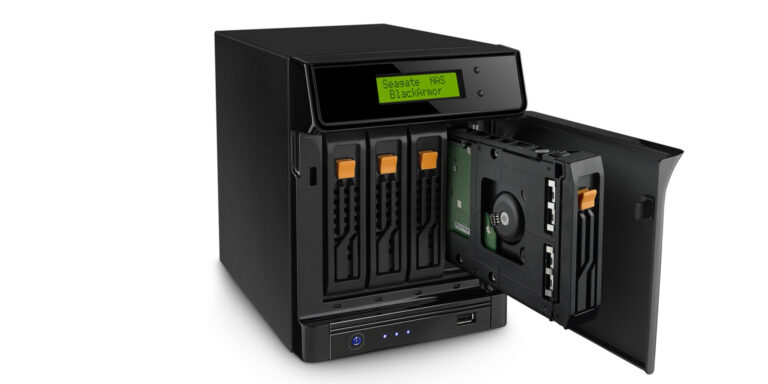Home and small business computer users often need a lot of data storage space. A popular way to store, share and manage data is by using a dedicated NAS device.
Table of contents
Introduction to network-attached-storage (NAS)
A network-attached storage (or NAS) device is a stand-alone, data storage server connected to a file-sharing network. It can be in the form of one hard drive or a couple of hard drives managed as one drive. These devices are usually specialised to store data and manage user access.
There are many types of NAS devices available. This post will focus more on introducing the smaller devices — typically using 2 to 4 hard drives. These NAS devices are more budget-friendly and make great networked storage solutions for serving files (e.g. documents, movies, music, etc.), backups, editing large files and more.
- Get the WD My Cloud EX2 Ultra NAS from Amazon.com
- Get the TP-Link TL-SG108 Gigabit Ethernet Network Switch from Amazon.com
- Get the WD Red hard drives for NAS from Amazon.com
NAS hardware
Being specialised for its purpose, a NAS device is basically a hard drive, or a set of hard drives, managed by a processor.
Although any hard drives can be used, it is preferable that they are optimised for speed, reliability and endurance. Many manufacturers, such as Western Digital, are now producing NAS-optimised drives.

WD Red hard drives are built for NAS storage systems. They are both reliable and high performing drives.
The processor follows instructions from a specialised NAS operating system to be able to manage and serve the data to the network. Hardware also includes at least one Ethernet connection port to be able to link to a local network.

The Seagate Business Storage 4-bay NAS device was renowned for its USM slot. It also has a USB 3.0 expansion slot. Image from storagereview.com.
Other features that have been seen are USB expansion ports and USM slots that allow additional storage space to be managed by the NAS and shared on the network.
Redundancy
When it comes to data storage, redundancy refers to the process of duplicating data over multiple hard drives so if a drive fails there will be a backup. NAS systems are renowned for their ability to manage RAID configurations.

Visual representation of a RAID 5 configuration using 4 hard drives. The data of each drive is stored in such a way that it will still be available when one hard drive fails.
When more hard drives are available, the device can be configured to store data in such a way that there is no data loss even if a hard drive fails. In such a case, the defective drive is simply replaced and the data will be redistributed back onto the added drive.
NAS software
NAS devices are managed by a dedicated operating system. Apart from the RAID configuration (which is selected upon installation), the software also configures ‘shares’ (shared folders) and user access to the device. Users can also be grouped together to give user group access to shared folders.

The My Cloud Home page of the WD My Cloud EX2 Ultra is where monitoring takes place. The same software also allows the configuration of this NAS device.
Shares, or shared folders, are the principle used to combine data types together. It works exactly the same as creating a directory on a PC. Shares are also created using the operating system, whereafter user access, read/write permissions and passwords can be set. Options also very often include settings for NFS and SAMBA/CIFS networking protocols.
Conclusion
A network-attached storage (or NAS) device is a stand-alone, data storage server connected to a file-sharing network. It is used to add large amounts of data storage space to be used by a group of computers on a network.


